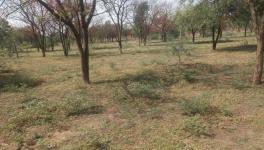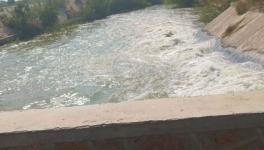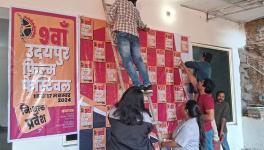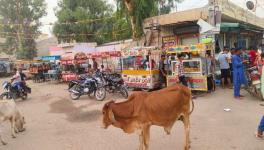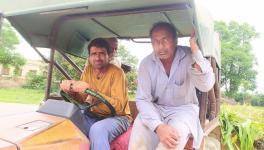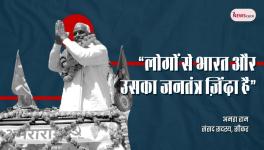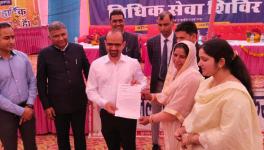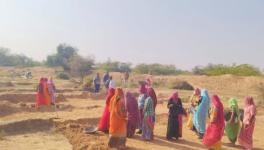Milk or Craftwork, Only Remunerative Pricing Can Save Rajasthan’s Camels and Herders
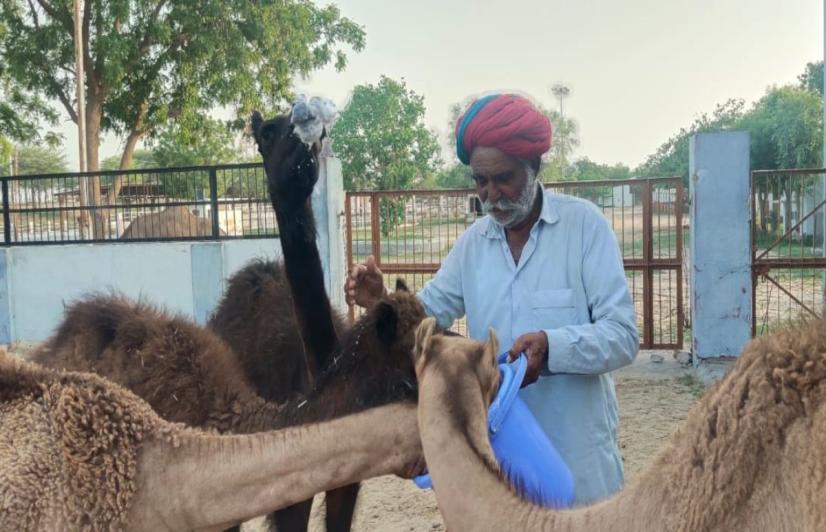
A camel keeper feeding the camels (Photo - Dr Mudita Popli, 101Reporters).
Bikaner: ‘Milk and son are never sold’ is a popular saying among the people of the Raika community of Rajasthan. The lives of these pastoralists are closely linked to camels, the ‘ship of the desert’, and they do not have a custom of selling camel milk outside.
However, the number of herders in the community and camels is fast dwindling. “Earlier, every household in the village used to keep camels. For farming, extracting water from wells and carrying loads, camels were the mainstay. They were used for weddings and processions, too,” says Rugharam Raika (56), a farmer and camel keeper from Bikaner's Sindhu village.
“When our people travelled through the desert and felt tired, they used to consume fresh milk from the accompanying camel to quench their thirst and hunger. Such was our connection with the animal,” he adds.
The 20th Livestock Census released in 2019 has shown a 35% decrease in the number of camels in Rajasthan against the previous census data from 2012. Ask him why, and Rughram says, “The youth are not ready to rear camels as it is not possible to roam around with them in summer. There are no forests left to graze. Keeping camels involves much expense, and the government's contribution has become necessary. Moreover, vehicles have replaced camels in transportation and machinery in agriculture.”
A camel can munch away 40 kg of green fodder in a day. In the case of dry fodder, it takes in around 15 kg. As a result, a farmer has to spend up to Rs 18,000 a month to maintain a camel.
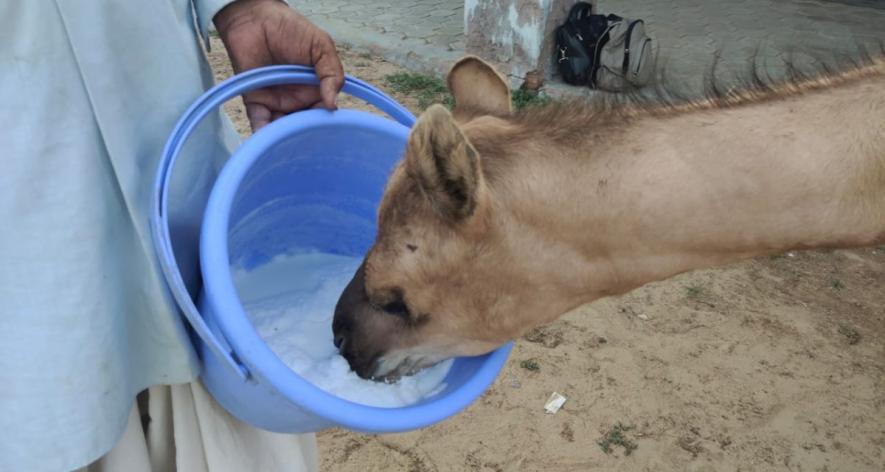
A camel being fed (Photo - Dr. Mudita Popli, 101Reporters).
Space shortage also prevents Raikas from rearing as many camels as they used to in the past. “Around 700 camels were present in the 10 houses of my extended family. Now, there are just 10 in my house due to space constraints,” says Ramswaroop Raika (48), another camel herder from Kesar Desar Jatan village near Bikaner.
Jetharam Meghwal (56), a farmer from Nalbari near Bikaner, says the number of camels in his house has come down to just one from nine. “Dry fodder has become so expensive that I cannot afford it. Also, the transportation tasks that were earlier carried out using camels are now being done by pickup vehicles,” he says.
Bikaner resident Raju attests to this when he says he has stopped driving a camel cart and turned to drive a school bus. The Raikas are basically associated with agriculture and animal husbandry, but they do not use camels for agriculture as much as they did before.
However, there is one thing that has not changed for the Raikas. They still do not sell camel milk. “There are other caste people like Rabaris and Meghwals who sell milk, but it is a taboo for us,” Ramswaroop insists.
Government effort boomerangs
Only 2.50 lakh camels are left in the whole of India, of which about 2.25 lakh are in Rajasthan. The National Research Centre on Camel (NRCC), established in Bikaner in 1984 under the aegis of the Indian Council of Agricultural Research, is making continuous efforts to boost its numbers through technological interventions and awareness programmes.
A camel gets ready for pregnancy only by age four, while the gestation period is around 13 months. “We, at the NRCC, have been experimenting to reduce the time taken to get pregnant to two-and-a-half years,” says NRCC Principal Scientist Dr RK Sawal.
In a bid to shore up the desert animal population, the state government has been providing Rs 10,000 to the farmer when a calf is born. However, farmers say this assistance is hardly enough to meet the fodder needs for four months.
Camels got the status of the ‘state animal of Rajasthan’ in 2014, after which the rules for transporting them to other states became very strict. Though done with a good intention to protect the animal, it posed issues for the people of nomadic communities as they often moved the animals from one place to another for grazing. Eventually, they reduced the number of camels they reared.
NRCC Director Dr Artabandhu Sahoo informs 101Reporters that the ‘state animal’ tag has had a negative impact. “The District Magistrate's permission became mandatory to sell camels or transport them to other states. As herders live in extremely rural settings, they have no idea of how to take approval. It is not easy either,” he says.
Reminding that the camel population will not increase just by giving the ‘state animal’ status, he says the state government should review its rules to stop camel herders from discarding their profession.
In this context, the local officials of the Animal Husbandry Department tell 101Reporters that they have no role to play as the NRCC, which is directly affiliated with the Centre, is working for the conservation and promotion of camels in Rajasthan.
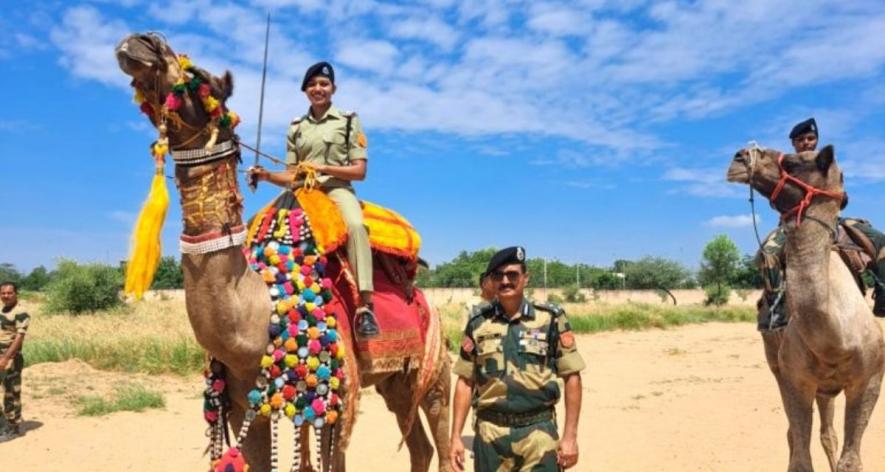
NRCC works towards the conservation and promotion of camels in Rajasthan (Photo - Dr. Mudita Popli, 101Reporters).
In 2008, the NRCC established the country's first camel milk dairy in Bikaner, which currently provides up to 100 litres daily. The NRCC has also tried breaking the taboo surrounding the sale of camel milk in the Raika community but without much success. Only a few have shunned their aversion to selling to shops, where camel milk is now available at Rs 80 per litre.
A powerhouse of nutrition
Camel milk is a nutritional powerhouse with extraordinary medicinal properties. “It has low fat with a high percentage of desalted calcium, vitamin C and micronutrients such as iron, copper and zinc. This is why we developed camel milk tea, coffee, kulfi, lassi, paneer, barfi, peda, kheer, ice cream and cheese from it,” says Dr Sawal.
These products are not available in the market and can be purchased only from the NRCC. Those who purchase milk mostly use it to deal with diseases. Camel milk is beneficial in cases of dengue, autism and diabetes. A study on the prevalence of diabetes found that the Raikas who habitually consumed camel milk did not suffer from diabetes.
“Based on availability, the NRCC provides camel milk to a private hospital in Pune and another in Punjab’s Faridkot catering to autistic children. Beauty products and millet food items containing camel milk are also being prepared for launch,” Dr Sawal says, adding that the centre has developed an anti-snake venom from camel's blood for saw-scaled viper attacks.
Camel bone and leather can be turned into valuable products. Items carved from the bone can be as beautiful as ivory creations, yet cheaper.
Though continuous efforts, including holding races and decoration competitions, have been made to connect the public with camels, positive results have not been achieved. The youth shy away from rearing camels citing the expenses involved and strict laws. In contrast, neighbouring Gujarat's herders buy more animals as they get remunerative prices by associating with Anand Milk Union Limited (Amul).
Camel meat is consumed in many Arab countries, but Rajasthan banned its slaughter by approving the Rajasthan Camel (Prohibition of Slaughter and Regulation of Temporary Migration or Export) Act, 2015, which deprived camel herders of a source of income.
Camels are the identity of Rajasthan. Only a new action plan with a focus on boosting the income of rearers can arrest the decline in the numbers of these hoofed mammals in the state.
(Dr Mudita Popli is a Rajasthan-based freelance journalist and a member of 101Reporters, a pan-India network of grassroots reporters)
Get the latest reports & analysis with people's perspective on Protests, movements & deep analytical videos, discussions of the current affairs in your Telegram app. Subscribe to NewsClick's Telegram channel & get Real-Time updates on stories, as they get published on our website.









